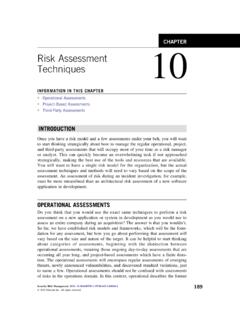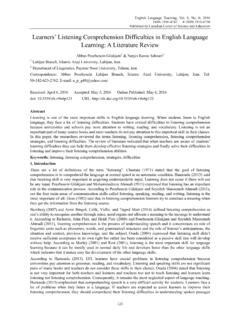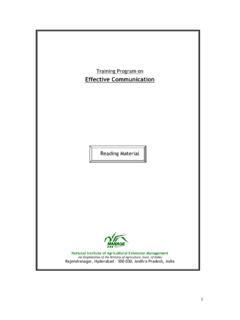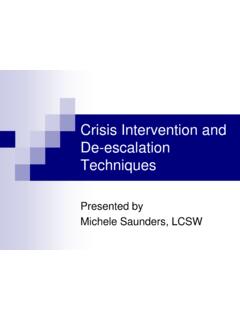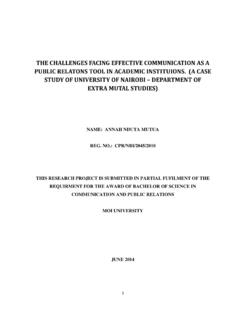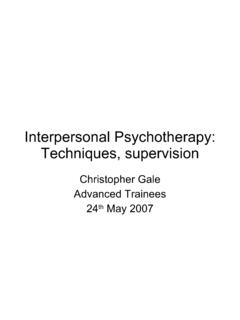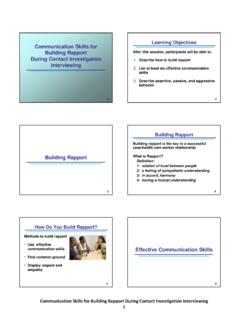Transcription of Using the SIOP Model for Effective Content Teaching with ...
1 Journal of Education and Training Studies Vol. 1, No. 2; October 2013 ISSN 2324-805X E-ISSN 2324-8068 Published by Redfame Publishing URL: 239 Using the SIOP Model for Effective Content Teaching with Second and Foreign Language Learners Veronika Kareva1 & Jana Echevarria2 1 Faculty of Languages, Cultures and Communication and Director of the Language Center, South East European University, Macedonia 2 Professor Emerita, California State University Long Beach, 1250 Bellflower Bl Long Beach 90804, USA Correspondence: Veronika Kareva, Faculty of Languages, Cultures and Communication and Director of the Language Center, South East European University, Macedonia.
2 E-mail: Received: July 4, 2013 Accepted: July 19, 2013 Online Published: August 6, 2013 URL: Abstract In this paper we present a comprehensive Model of instruction for providing consistent, high quality Teaching to L2 students. This Model , the SIOP Model (Sheltered Instruction Observation Protocol), provides an explicit framework for organizing instructional practices to optimize the effectiveness of Teaching second and foreign language learners. The SIOP Model includes features that promote acquisition of both subject area Content ( , math, science, literature) and language development (the target language).
3 The SIOP Model is presented in the context of three settings: immigrant students who may or may not have grade-level literacy in their mother tongue, bilingual students who are learning Content through a foreign language and students of English as a foreign language who are learning professional Content in English through English for Specific Purposes (ESP) course. Our experience from all three settings indicates that there is significant improvement in achieving the learning outcomes for English Language Learners by Using this Model of instruction. Keywords: SIOP, language, Content , instruction, ESP 1.
4 Background Due to increased migration and an emphasis worldwide on learning English, schools are faced with Teaching second language learners to meet the same academic requirements as other students and, in some settings, to make their academic programs more relevant for current employment opportunities by emphasizing English. In some situations, students are learning a new language through Content Teaching (such as Spanish-speaking students in Mexico learning science through English) while others are learning new Content in a new language (such as immigrant Chinese-speaking students in Barcelona being taught with Catalan as the medium of instruction).
5 In countries where English is learned as a foreign language (as in Macedonia, a former Yugoslav Republic) as a result of globalization and the aspirations for EU and NATO integration, in order to have better opportunities for employment, students also need to learn different professional Content in English and at the same time become more fluent in it. Learning Needs of L2 Students The cognitive and linguistic demands of learning through a second language are significant. With high quality instruction that includes linguistic accommodations, students have access to the core curriculum and learn the kind of academic language they need to be successful in school.
6 The research literature provides guidance on practices that are Effective for making instruction understandable for second language learners (August & Shanahan, 2006; Calderon, et al, 2011; Genesee, et al., 2006; Pray & Jiminez, 2009; Short, 2013). One approach that reflects many of these practices is sheltered instruction. Sheltered Instruction is a way of Teaching that makes lessons meaningful and understandable for second language learners. Sheltered instruction is used for Content area instruction in all subjects, , social studies, math, science, reading and language arts instruction, and across grade levels. The goal of sheltered instruction is to provide access to the core curriculum by Teaching in a way that is meaningful and understandable for second language learners and through these modified lessons, students learn academic language.
7 Sheltered instruction gives students an Journal of Education and Training Studies Vol. 1, No. 2; 2013 240 opportunity to learn the target language as they master important Content and skills. Sheltered teachers are cognizant that these students are learning a new language at the same time they are learning new concepts, information, and skills -- and they make adjustments in lesson planning and delivery to facilitate their learning. Sheltered instruction is not a watered-down version of grade level instruction but is a means for making cognitively challenging lessons comprehensible to second language learners.
8 If second language learners are to be successful academically, they must have access to Content material and opportunities to practice academic skills and tasks common to mainstream classes (Echevarria & Graves, 2010; Cloud, Genesee & Hamayan, 2009; Short, 2002). Other terms for sheltered instruction include sheltered English immersion (SEI), Content and language integrated learning (CLIL), and specially designed academic instruction in English (SDAIE). All terms represent classrooms in which students are learning Content in a language that is not their mother tongue. In the past, approaches for Teaching Content such as sheltered instruction lacked a clear operational definition which lead to inconsistent and sometimes ineffective practice.
9 Further, there was not an explicit focus on consistently developing language proficiency in each lesson, especially academic language. Language acquisition was more of a byproduct of sheltered lessons than a central focus. Even when teachers were aware of research-based practices, they did not use them consistently in every lesson. Thus, researchers set out to develop and test a Model of sheltered instruction that would help teachers in lesson planning and consistent delivery of high quality lessons that explicitly addressed Content and academic language for second language learners (Echevarria, Vogt & Short, 2000).
10 2. The SIOP Model The SIOP Model (Echevarria, Vogt, & Short, 2000; 2013) was developed through a 7-year research study (1996-2003) sponsored by the National Center for Research on Education, Diversity & Excellence (CREDE) and funded by the Department of Education. The researchers collaborated with teams of teachers to identify best practices from the professional literature and organize combinations of these techniques to build a Model of sheltered instruction. The SIOP (Sheltered Instruction Observation Protocol) was initially an observation tool for researchers to measure teachers implementation of sheltered instruction techniques and evolved into a lesson planning and delivery approach with 30 features of instruction grouped into eight components Lesson Preparation, Building Background, Comprehensible Input, Strategies, Interaction, Practice & Application, Lesson Delivery, and Review & Assessment (See Appendix A).










